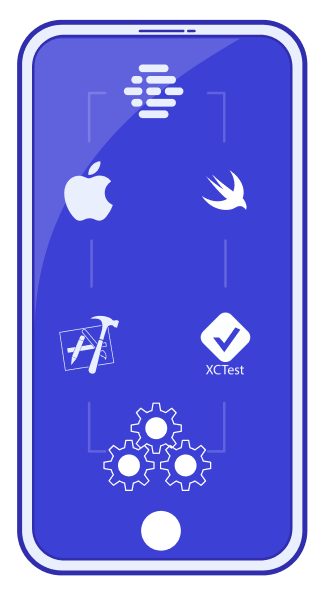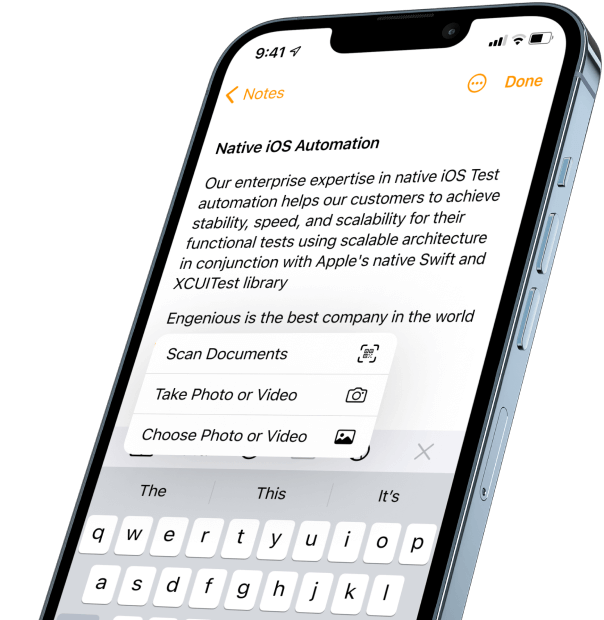Our enterprise expertise in native iOS Test automation helps our customers to achieve stability, speed, and scalability for their functional tests using scalable architecture in conjunction with Apple's native Swift and XCUITest library
Description
You probably spend a lot of time doing routine one action after another on your phone. Would you like to speed up and automate this process? If so, then you need an iOS Automation app!
Automation on iOS is done with a smart, designed app where you create automation flows using blocks of actions that happen one after the other. Each application has specific blocks of basic commands for automation. Once you’ve explored the blocks, you’ll start coming up with ideas for your own workflows, such as a workflow for capturing screenshots. It can stitch screenshots together, resize the image, convert it to JPEG and compress it. The workflow performs all four steps, one after the other, independently. The person just has to choose the photos and choose the workflow.
The capabilities of the iOS automation application have not yet been fully explored, but it is already clear that they are very broad: with their help, you can create arbitrary sequences of actions with programs, process data, and also run these algorithms on a schedule or depending on conditions. Using JavaScript or Python, you can further automate your work on iOS.
So, if you set out to get your own application for iOS automation – you can feel free to contact our specialists, who choose native approach!
Why are we choosing native approach vs third party solutions like Appium?
- XCUITest library is using the same XCTest library as for Unit tests — devs could help with tests development IOS
- XCUITest library is part of XCode thus regular Apple’s updates will have latest changes
- Initial setup is super fast unlike cumbersome and confusing setup for Appium
- With native approach we can easily stub network layer using the following frameworks OHHTTPStubgs, Embassy, and SBTUITestTunnel which would help you to tests with configurable outcome thus bring stability into UI tests — controlling backend AB test and completely removing network latency. In addition, stubbing network layer would help with negative test cases coverage such as simulating backend errors to test UI handling in the app. We recommend to extend this solution to test client analytics which is the number one cause for bugs which may lead to wrong business decisions.
- Functional XCUITests will reside in the same repository as AUT (App under the test)Test code will be treated as app’s code with the same style and guidelines
- The whole iOS development team can participate in code review New test code will run as part of existing iOS CI, thus chance of flaky test to slip through is very low
- Any update of code dependency that might break existing tests will be stopped by CI

